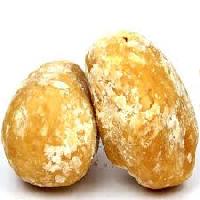The Trip of Sugarcane: From Harvest to Everyday Products
The journey of sugarcane is a multifaceted procedure that starts with precise cultivation and culminates in a variety of products that penetrate our everyday lives. As we check out the numerous aspects of sugarcane's journey, its duty in sustainability and the wider ramifications for our environment come right into sharper focus.
Cultivation of Sugarcane
The farming of sugarcane is a vital farming process that requires particular environmental problems and monitoring techniques. Optimal growth occurs in subtropical and exotic areas where temperature levels range between 20 ° C and 32 ° C. Adequate rainfall or watering is necessary, as sugarcane prospers in moist dirt with well-drained problems (sugarcane product). Dirt top quality substantially influences yield; therefore, farmers often perform dirt examinations to identify nutrient demands
Growing normally takes place in rows, making use of stem cuttings known as setts, which are planted flat. This method helps with reliable harvesting and makes best use of sunshine direct exposure. Crop rotation and intercropping are suggested techniques to improve soil fertility and lower insect infestations. In addition, farmers employ integrated pest management techniques to reduce chemical inputs while making certain healthy plant advancement.
Fertilization is one more important element, with potassium, nitrogen, and phosphorus being the key nutrients required for optimal growth. Timely application of these plant foods can significantly boost sugar yields. In addition, monitoring for illness and pests throughout the growing period is imperative, as these aspects can detrimentally influence plant health and wellness and performance. In general, successful sugarcane growing hinges on a combination of ecological stewardship, critical planning, and ongoing administration techniques.
Collecting Strategies
Effective sugarcane farming culminates in the collecting stage, which is critical for optimizing return and making sure top quality. The timing of the harvest is crucial; sugarcane is typically collected when sucrose levels top, usually between 10 to 18 months after planting. This period varies based on climate, dirt kind, and sugarcane range.
Harvesting techniques can be generally classified into handbook and mechanical approaches. Hands-on harvesting is labor-intensive, relying upon proficient workers that make use of machetes to reduce the stalks short. This technique enables discerning harvesting, where only the ripest walking canes are chosen, consequently boosting total sugar content.
Conversely, mechanical harvesting has acquired popularity as a result of its effectiveness and cost-effectiveness. Specialized harvesters geared up with cutting knives and conveyor systems can process large areas quickly, significantly decreasing labor prices. This approach may lead to the addition of immature walking canes and a potential reduction in sugar high quality.

No matter the method employed, ensuring that collected walking canes are transferred rapidly to processing centers is vital. Prompt dealing with minimizes perishing and protects the integrity of the sugarcane, setting the phase for optimal processing.
Processing Techniques
Handling sugarcane entails several essential actions that change the harvested stalks into functional items, mainly sugar and molasses. The initial stage is washing the cane to remove soil and particles, followed by the removal of juice via crushing or milling. This procedure commonly uses heavy rollers that damage the walking cane fibers to release the sweet fluid had within.
Once the juice is extracted, it goes through clarification, where contaminations such as dirt bits see post and bagasse are eliminated. This is frequently accomplished by including lime and heating the juice, permitting sedimentation. The cleared up juice is after that concentrated with dissipation, where water material is lowered, causing a thick syrup.

Ultimately, the handling of sugarcane not only produces sugar and molasses yet additionally prepares for various by-products, which will certainly be explored in succeeding discussions.
Products Derived From Sugarcane
Sugarcane is a versatile plant that yields a broad array of products past simply sugar and molasses. Among the main spin-offs are ethanol and biofuels, which have actually gained prestige as renewable resource resources. Ethanol, generated with the fermentation of sugarcane juice, functions as a different to nonrenewable fuel sources and is usually combined with gasoline to create cleaner-burning fuels, lowering greenhouse gas emissions.
In addition, sugarcane is a considerable source of bagasse, the fibrous deposit remaining after juice removal. Bagasse is utilized in different applications, consisting of the manufacturing of paper, naturally degradable product packaging, and as a biomass fuel for energy generation. Its usage not just lowers waste but additionally boosts the sustainability of sugarcane handling.
Furthermore, sugarcane-derived items reach the food sector, where it acts as a natural flavoring representative and sugar in various culinary applications. In the realm of cosmetics, sugarcane essences are incorporated into skin care products due to their all-natural exfoliating residential properties.
Ecological Impact and Sustainability
The farming and handling of sugarcane have significant implications for environmental sustainability. This plant calls for significant water sources, commonly bring about depletion of local water supplies and influencing bordering ecological communities. In addition, the usage of plant foods and why not find out more chemicals in sugarcane farming can lead to soil destruction and river contamination, presenting risks to biodiversity.

Sustainable sugarcane farming additionally promotes dirt wellness via crop rotation and lowered tillage, boosting carbon sequestration. The fostering of these techniques not only sustains environmental stability yet likewise enhances the durability of farming neighborhoods versus environment modification.
Conclusion
In summary, the trip of sugarcane includes different phases from cultivation to processing, ultimately leading to a large array of products. The value of sugarcane expands beyond simple sugar, adding to renewable resource via ethanol manufacturing, great site sustainable packaging through bagasse, and natural essences for cosmetics. This multifaceted crop plays an important role in both dietary enrichment and ecological sustainability, highlighting its relevance in modern agricultural and industrial practices.
Successful sugarcane cultivation finishes in the harvesting stage, which is essential for optimizing yield and making sure top quality. The timing of the harvest is critical; sugarcane is typically collected when sucrose levels height, typically between 10 to 18 months after growing.Handling sugarcane includes several crucial steps that transform the collected stalks right into useful products, mainly sugar and molasses.Sugarcane is a versatile crop that yields a broad variety of products beyond just sugar and molasses. In addition, the use of fertilizers and chemicals in sugarcane farming can result in dirt deterioration and waterway contamination, presenting threats to biodiversity.
 Tony Danza Then & Now!
Tony Danza Then & Now! Talia Balsam Then & Now!
Talia Balsam Then & Now! Rachael Leigh Cook Then & Now!
Rachael Leigh Cook Then & Now! Justine Bateman Then & Now!
Justine Bateman Then & Now! Kerri Strug Then & Now!
Kerri Strug Then & Now!